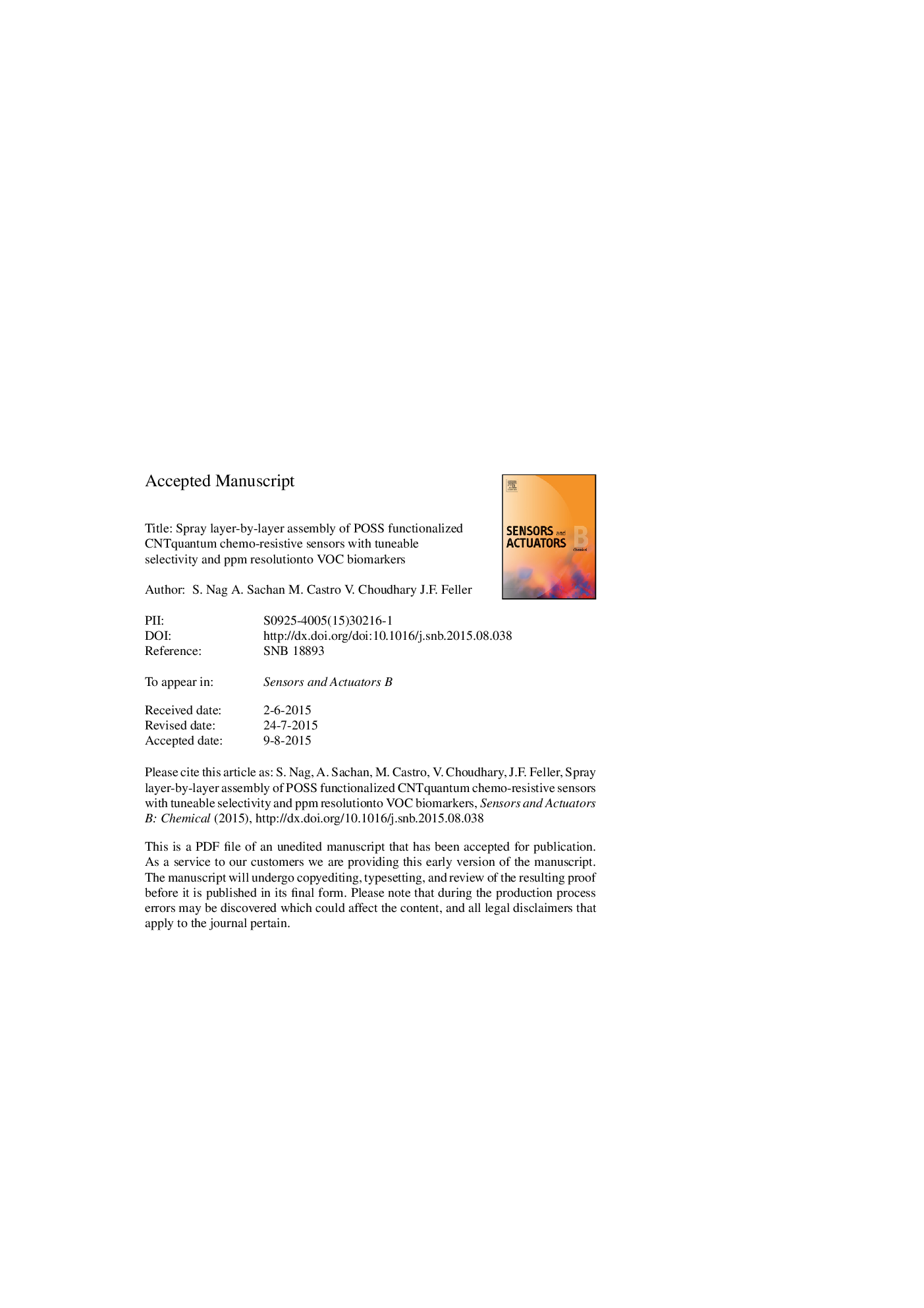| Article ID | Journal | Published Year | Pages | File Type |
|---|---|---|---|---|
| 7145125 | Sensors and Actuators B: Chemical | 2016 | 37 Pages |
Abstract
The analysis of volatile organic compounds (VOC) emanating from the human body, the volatolome, gives an idea of the metabolic and physiological functions of an individual and can provide non-invasive, cost effective anticipated diagnosis of several diseases including cancer. A novel way to control the disconnection of the nano-junctions of the percolated conducting network in chemo-resistive sensors composed of different polyhedral oligomeric silsesquioxanes (POSS) covalently and non-covalently bonded to the surface of functionalized CNT has been investigated. The resulting series of quantum resistive sensors (QRS) of different nano-junctions' gap and chemical selectivity that has been assembled in to an array (e-nose), and submitted to a set of lung cancer VOC biomarkers, show very good discrimination ability and a ppm level resolution even in the presence of 50% of moisture. In particular one sensor was found highly selective to acetone, which is a biomarker of diabetes and lung cancer, whereas another sensor was more selective to cyclohexane, which is a biomarker of malignant pleural mesothelioma and lung cancer. Therefore, it is expected that such QRS judicially exploited can meet biomedical applications such as anticipated diagnostic of cancers by the analysis VOC from the volatolome.
Related Topics
Physical Sciences and Engineering
Chemistry
Analytical Chemistry
Authors
S. Nag, A. Sachan, M. Castro, V. Choudhary, J.F. Feller,
